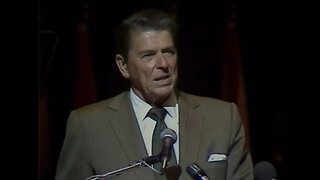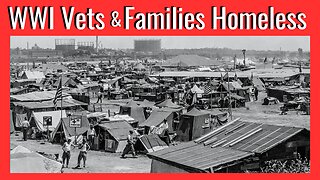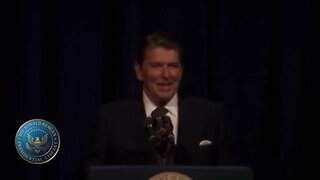US Military attacks demonstrating American WW1 veterans in 1932
The World War Adjusted Compensation Act, passed by Congress as sort of a 20-year insurance policy, awarded all qualified veterans a redeemable “Adjusted Service Certificate” worth an amount equal to 125% of his wartime service credit. Each veteran was to be paid $1.25 for each day they had served overseas and $1.00 for each day they served in the United States during the war. The catch was that the veterans were not allowed to redeem the certificates until their individual birthdays in 1945.
On May 15, 1924, President Calvin Coolidge had, in fact, vetoed the bill providing for the bonuses stating, “Patriotism, bought and paid for, is not patriotism.” Congress, however, overrode his veto a few days later.
While the veterans might have been happy to wait for their bonuses when the Adjusted Compensation Act passed in 1924, the Great Depression came along five years later and by 1932 they had immediate needs for the money, like feeding themselves and their families.
▫️The Bonus Army Veterans Occupy D.C.
The Bonus March actually began in May 1932 as some 15,000 veterans assembled in makeshift camps scattered around Washington, D.C. where they planned to demand and wait for the immediate payment of their bonuses.
The first and largest of the veterans’ camps, dubbed “Hooverville,” in as a backhanded tribute to President Herbert Hoover, was located on Anacostia Flats, a swampy bog directly across the Anacostia River from the Capitol Building and the White House. Hooverville housed about 10,000 veterans and their families in ramshackle shelters built from old lumber, packing boxes, and scrapped tin from a nearby junk pile. Including the veterans, their families, and other supporters, the crowd of protesters eventually grew to nearly 45,000 people.
Veterans, along with the assistance of the D.C. Police, maintained order in the camps, built military-style sanitation facilities, and held orderly daily protest parades.
▫️The Bonus Army Veterans Occupy D.C:
The Bonus March actually began in May 1932 as some 15,000 veterans assembled in makeshift camps scattered around Washington, D.C. where they planned to demand and wait for the immediate payment of their bonuses.
The first and largest of the veterans’ camps, dubbed “Hooverville,” in as a backhanded tribute to President Herbert Hoover, was located on Anacostia Flats, a swampy bog directly across the Anacostia River from the Capitol Building and the White House. Hooverville housed about 10,000 veterans and their families in ramshackle shelters built from old lumber, packing boxes, and scrapped tin from a nearby junk pile. Including the veterans, their families, and other supporters, the crowd of protesters eventually grew to nearly 45,000 people.
Veterans, along with the assistance of the D.C. Police, maintained order in the camps, built military-style sanitation facilities, and held orderly daily protest parades.
▫️The D.C. Police Attack the Veterans:
On June 15, 1932, the US House of Representatives passed the Wright Patman Bonus Bill to move up the payment date of the veterans’ bonuses. However, the Senate defeated the bill on June 17. In protest to the Senate’s action, the Bonus Army veterans marched down Pennsylvania Avenue to the Capitol Building. The D.C. police reacted violently, resulting in the deaths of two veterans and two police officers.
▫️The U.S. Army Attacks the Veterans:
On the morning of July 28, 1932, President Hoover, in his capacity as Commander in Chief of the military, ordered his Secretary of War Patrick J. Hurley to clear the Bonus Army camps and disperse the protesters. At 4:45 p.m., U.S. Army infantry and cavalry regiments under the command of General Douglas MacArthur, supported by six M1917 light tanks commanded by Maj. George S. Patton, assembled on Pennsylvania Avenue to carry out President Hoover’s orders.
With sabers, fixed bayonets, tear gas, and a mounted machine gun, the infantry and the cavalry charged the veterans, forcibly evicting them and their families from the smaller camps on the Capitol Building side of the Anacostia River. When the veterans retreated back across the river to the Hooverville camp, President Hoover ordered the troops to stand down until the next day. MacArthur, however, claiming the Bonus Marchers were attempting to overthrow the U.S. government, ignored Hoover’s order and immediately launched a second charge. By the end of the day, 55 veterans had been injured and 135 arrested.
▫️The Aftermath of the Bonus Army Protest:
The U.S. Army saw the exercise as an operational success. The Bonus Expeditionary Forces had been permanently dispersed.
The American press, however, saw it differently. Even the Washington Daily News, which had typically supported Hoover and his fellow Republicans called it “A pitiful spectacle,” to see “the mightiest government in the world chasing unarmed men, women, and children with Army tanks. If the Army must be called out to make war on unarmed citizens, this is no longer America.”
The political fallout from the rout of the Bonus Army was swift and severe. While the dismal economy was the prevailing issue in the 1932 presidential election, the “pitiful spectacle” of starving veterans being chased by tanks weakened Hoover’s bid for re-election. In November, an American populace eager for change, swept Hoover’s opponent, Franklin D. Roosevelt, into office by a wide margin. Elected to four terms in office, Roosevelt went on to become America’s longest-serving president. However, he was also the last Republican president until Dwight Eisenhower was inaugurated in 1953. Eisenhower’s immense popularity for his leadership in World War II easily overcame his role in the attack on the veterans at Anacostia Flats.
While Hoover’s militaristic treatment of the Bonus Army veterans may have contributed to his defeat, Roosevelt had also opposed the veterans’ demands during the 1932 campaign. However, when the veterans held a similar protest in May 1933, he provided them with meals and a secure campsite.
To address the veterans’ need for jobs, Roosevelt issued an executive order allowing 25,000 veterans to work in the New Deal program’s Civilian Conservation Corps (CCC) without meeting the CCC’s age and marital status requirements.
On January 22, 1936, both houses of Congress passed the Adjusted Compensation Payment Act in 1936, appropriating $2 billion for the immediate payment of all World War I veterans’ bonuses. On January 27, President Roosevelt vetoed the bill, but Congress immediately voted to override the veto. Almost four years after they had been driven from Washington by Gen. MacArthur, the Bonus Army veterans finally prevailed.
Ultimately, the events of the Bonus Army veterans’ march on Washington contributed to the enactment in 1944 of the GI Bill, which has since assisted thousands of veterans make the often difficult transition to civilian life and in some small way pay back the debt owed to those who risk their lives for their country.
Follow Question Antiquity for more‼️
.
.
.
.
.
#military #army #airforce #navy #tactical #ww #marines #soldier #militarylife #airsoft #f #police #usa #veterans #aviation #guns #veteran #specialforces #conspiracyfact #usarmy #history #usmc #war #falseflag #america #gun #soldiers #armedforces #usaf #conspiracy
-
 6:12
6:12
Patriot In The Dark
7 months ago⚔️ Veterans for Peace Pt 1 — VFW Convention – Ronald Reagan 1980 * PITD
40 -
 6:54
6:54
Truth Seekers Worldwide
1 year agoThe US Army Fired on 10K WWI Veterans in DC, 1932
1.11K6 -
 3:31:53
3:31:53
MOX NEWS
1 year agoRage Against The War Machine! Anti-War Rally In Washington DC
7753 -
 7:57
7:57
Libertarian99
1 year agoVP George HW Bush's DIRECT CONNECTION to the assassination attempt on President Reagan on March 30th 1981
3.72K7 -
 3:25
3:25
DeVeRneY
4 months agoUNITED STATES MILITARY SEEN AS ”G.I” GOVERNMENT ISSUE🧑🚀🏛️👩🚀⭐️
4482 -
 1:08
1:08
DeVeRneY
11 months agoREMEMBERING MEMORIAL DAY👨✈️OF BRAVE HEROES❤️WHO SERVED AMERICA🇺🇸💙🎖️⭐️
1.33K3 -
 24:35
24:35
Declarations of Truth
4 months agoMilitary, civilian control, and Trump
3285 -
 58:37
58:37
QQPatriot
1 year agoThe Day Israel Attacked America: Attack on the USS Liberty
9.56K20 -
 4:32
4:32
Patriot In The Dark
9 months ago⚔️ America, Prepared for Peace Pt 2 – Veterans of Foreign Wars – Ronald Reagan 1984 * PITD
80 -
 14:41
14:41
Truths Unlimited
5 months agoWARNING TO AMERICA - Vietmam Army Intel Vet: | “We Have to Get Mad, Say We Not Take It Anymore!
3.93K4